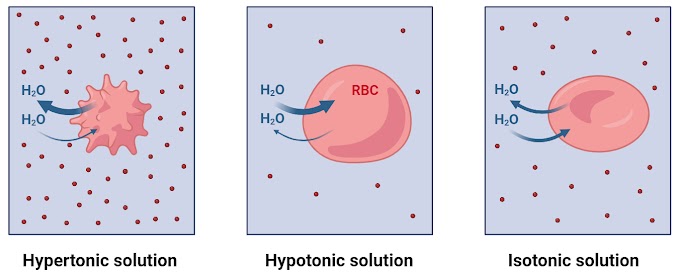Why Does Fruit Turn Brown After Being Cut
When fruit is cut, it often turns brown due to a chemical process known as enzymatic browning. This occurs when the cells in the fruit are damaged, exposing certain internal compounds to oxygen in the air. The process involves an enzyme called polyphenol oxidase (PPO), which reacts with natural chemicals called phenolic compounds to form pigments known as melanins, causing the visible browning on the surface of the fruit.
Let's study the process in detail.
1. Cell Damage
Fruit tissues are made up of cells that are surrounded by protective walls and membranes. Inside each cell are various compartments, suc as the cytoplasm, which contains enzymes like polyphenol oxidase (PPO) and vacuoles, which store phenolic compounds and other substances. These structures keep the enzymatic machinery and phenolic compounds physically separated under normal conditions.
Cutting, bruising, or damaging the fruit physically breaks the cell walls and membranes, disrupting this compartmentalization. As a result, phenolic compounds (from the vacuole) are released.
Enzymes like PPO (from the cytoplasm) come into contact with these phenolic compounds. Oxygen from the air diffuses into the damaged tissue, providing the necessary environment for the enzymatic reaction.
2. Enzymatic Reaction
PPO is an enzyme that catalyzes oxidation reactions. It requires oxygen as a reactant to function. PPO specifically targets phenolic compounds, a group of natural chemicals abundant in fruits that include compounds like catechins and chlorogenic acids.
When exposed to oxygen, PPO interacts with the phenolic compounds and converts them into a new class of molecules called quinones.Phenolic compound + Oxygen (via PPO) → Quinones + Water
Quinones are reactive molecules. While they are initially colorless or lightly colored, their reactivity leads to further changes that contribute to browning. Quinones also have antimicrobial properties, which may provide some natural protection to the damaged fruit.
3. Formation of Pigments
Quinones are not stable and they react with each other and with other molecules in the fruit to form long-chain polymers. These polymers are known as melanins.
Melanins are dark pigments (brown or black in color) responsible for the browning appearance. These compounds are chemically stable and accumulate on the surface of the cut fruit.
Quinones undergo chemical reactions like oxidation and condensation, linking together into larger, complex molecules that make up the melanins. These reactions can also involve amino acids, proteins, or other molecules naturally present in the fruit, influencing the exact shade and intensity of browning.
- Cutting or damaging the fruit breaks the cell walls and exposes the inner components to oxygen.
- Polyphenol oxidase (PPO) reacts with phenolic compounds in the presence of oxygen, converting them into reactive quinones.
- Quinones undergo further chemical reactions, producing melanins, which accumulate as brown or black pigments on the surface of the damaged area.
This process happens very quickly, often within minutes, in fruits like apples, bananas, and pears, making enzymatic browning a visible and fascinating phenomenon.
Examples of Fruits That Turn Brown
- Apples: Cut apples quickly develop a brown surface due to their high levels of polyphenols and PPO.
- Bananas: Bananas turn brown when sliced or even after sitting exposed because of a similar enzymatic process.
- Pears: Pears also brown rapidly due to their enzymatic composition.
- Avocados: When exposed to air, avocados darken because of the same reaction, though it can take a bit longer than for apples or bananas.
Factors That Influence the Rate of Fruit Browning
- Oxygen Exposure: More exposure to oxygen accelerates browning. This is why tightly wrapping or covering cut fruit can slow the process.
- pH Levels: PPO activity is optimal in a pH range of 5–7. Fruits with lower acidity (higher pH) brown faster than those with high acidity.
- Temperature: Higher temperatures increase enzyme activity, speeding up browning, while lower temperatures slow the reaction.
- Metal Ions: Certain metals, such as iron and copper, can catalyze the enzymatic reaction, making browning more pronounced.
How to Prevent or Slow Down Fruit Browning
- Reduce Oxygen Contact: Cover fruit with plastic wrap, submerge it in water, or vacuum seal it.
- Use Acidic Solutions: Apply lemon juice, lime juice, or vinegar to lower the pH and inhibit PPO activity.
- Refrigeration: Lower temperatures slow enzymatic reactions.
- Blanching: Briefly heating the fruit can denature PPO and prevent browning.
- Use of Antioxidants: Coating fruit with ascorbic acid (vitamin C) can neutralize oxygen, slowing the reaction.
Biological Purpose of Fruit Browning
Browning may have evolved as a protective mechanism for plants. The melanins produced can act as a barrier, reducing microbial infection and deterring pests from eating the damaged fruit.
In conclusion, fruit browns after being cut due to the enzymatic oxidation of phenolic compounds, facilitated by oxygen exposure. This process can be managed using simple techniques like applying acidic solutions, refrigeration, or reducing oxygen exposure.






0 Comments